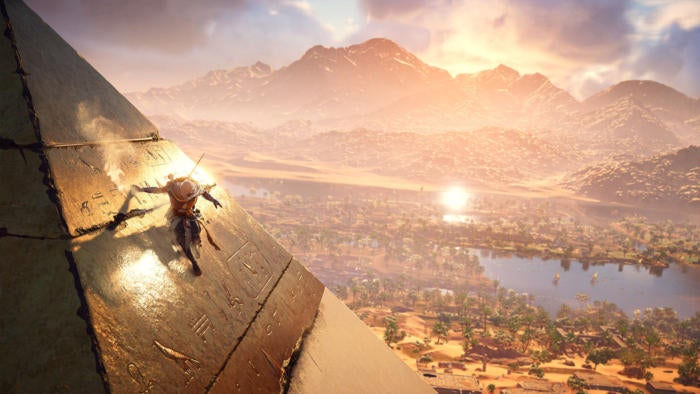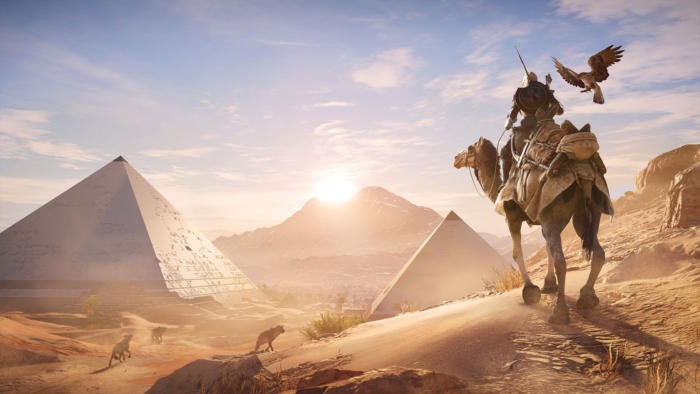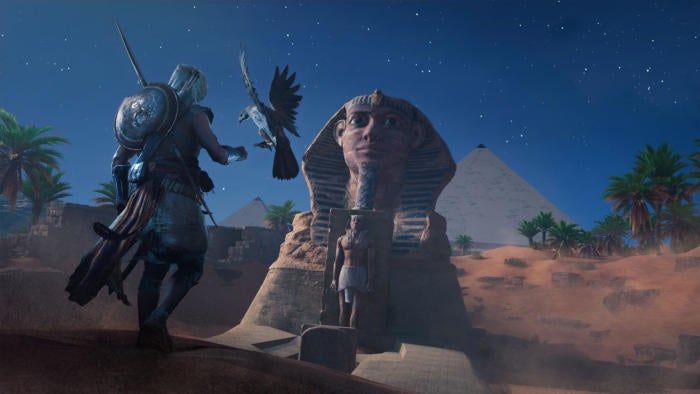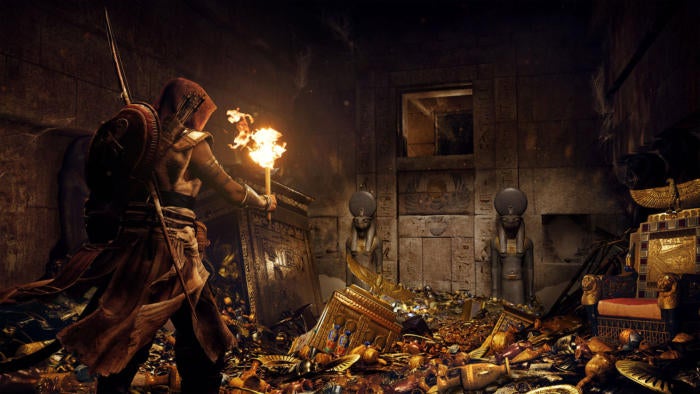
When Ubisoft announced last year that the Assassin’s Creed series would take a year off, retool, and return in 2017, I anticipated huge sweeping differences. The series needs huge sweeping differences—with a grueling yearly release schedule, Assassin’s Creed has suffered from consumer and critical malaise more than perhaps any Ubisoft property.
But after playing Assassin’s Creed: Origins for 20 or so minutes during E3, I don’t think we’re getting huge sweeping differences. Assassin’s Creed: Origins has been tweaked in places, and its Cleopatra-era Egypt setting is certainly the most creative we’ve seen in years, but it doesn’t feel like a true rebirth or a reimagining.
Walk like an Egyptian
First and foremost, the usual disclaimer applies: We played 20 minutes of an hours-long experience, so maybe the seeds of Assassin’s Creed’s redemption come later in the game. There’s plenty still to see.
More than usual, actually. At one point in the demo I flipped open my map and damn, it’s enormous. My handler was only willing to say it’s “The biggest Assassin’s Creed map ever” or something along those lines, but that’s understating it—as far as I can tell, Origins is at least twice or maybe three times the size of Assassin’s Creed: Syndicate.

Assassin’s Creed: Origins
Whether the increased size is due to the extra year of development or just simply the relatively flat architecture of Ancient Egypt, I’m not sure.
The more pressing question: Did Origins need to be this large? That’s one we won’t be able to answer until a proper review, but I’m skeptical. If you’d asked me “What does Assassin’s Creed need to work on?” increasing the size of its already bloated map would probably not be top of my list.
Top of the list would probably be its uninspired mission structure, and here I haven’t seen much improvement. The demo consisted of a few story-based missions, a fortress takeover, and a bout in the Coliseum-esque Arena. The first mission I did was pretty generic, aside from the Egyptian reskin—a priest is beating a slave because two gold statues have been lost, so I collected the statues and brought them back. That’s it.
Now, at least it was propped up as a unique event. That’s a step forward. Watch Dogs 2 didn’t exactly reinvent the Ubisoft wheel either, but by couching every mission in a vignette, adding just a dash of story to proceedings, making the circumstances of each feel somewhat interesting, Marcus’s hacking shenanigans ended up feeling like the freshest Ubisoft open-world in years.

Assassin’s Creed: Origins
Maybe that’s the case with Assassin’s Creed too. Going and grabbing the statues? That’s nothing we haven’t seen before. The series is littered with fetch quests of all sorts. But by presenting it as a singular story segment and not “Collect eighteen statues scattered around the world,” by framing it as a character-building moment for protagonist Bayek, it at least felt somewhat more interesting. Somewhat.
Plus this mission revealed that Bayek can dive underwater, since one of the statues had sank to the bottom of the river. That was a cool touch, and probably the biggest technical achievement Assassin’s Creed has added since the seamless interiors of Unity.
It felt safe though. It felt like Assassin’s Creed…again.
The one hook Ubisoft tossed out is the ability to change your approach to missions based on the time of day. Origins touts upgraded NPCs, which will now go about their day in a semi-dynamic manner. Guards will cycle on and off patrols for instance, and crowds will change based on whether it’s day or night.
This feeds directly into assassinations. The developer guiding my demo gave me an example. Say you’re tasked with taking out a guard. You could rush in and kill him, sure. You could also study his patrol route, then use that information to return and ambush him when he’s on his own. Or, if you prefer a more indirect approach, you can wait until the guard goes home for the night, break into his house and murder him.

[Source”timesofindia”]
